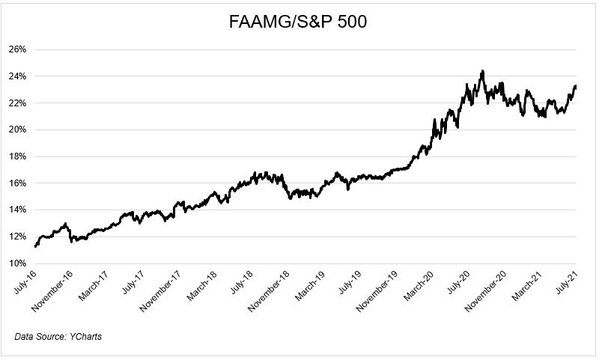One Fund to Cover It All
While a single-ETF investment may offer vast diversification, the pertinent question remains whether, according to sound judgment, an investor should trust their entire money to one instrument, regardless of its broad scope. The ensuing discussion aims to weigh the pros and cons of using a single ETF as the only instrument in one’s portfolio, underscoring the events and realistic options on which conclusions are based.

The Appeal of Single-ETF Investment
Under the simplest definition, a single ETF as the only investment provides a high degree of product diversification in one security. For example, SPDR S&P 500 tracks the market index of 500 U.S. companies and provides access to both raw materials and information technology businesses. Such an ETF is representative of all American sectors, and an investor receives their stake in Apple and Microsoft within one deal.
In turn, an investor achieves a high level of ease in managing their funds when owning a single position. Given that such an investment will allow for the achievement of all set goals, as fully as a person can calculate, the investment will allow one not to dwell on information regarding securities to make a profit, which will result in significant savings in money and time. In this case, financial benefits are already visible, given the minimum commission on transactions and the probable presence of lower expenses compared to investing in dozens of individual stocks.
Risks and Other Considerations
The more diversified the risk, the lower the probability of the investor losing all their capital. It implies there is still a low but existent chance that an investor will lose everything.
Market risk shouldn’t be ignored. However, when the market drops, you can lose even if you invest in funds as diversified as the S&P 500. During the crisis of 2008, the S&P 500 index decreased by almost 38%. An investor who had all his investments in an S&P 500 ETF could easily witness the value of his or her portfolio drop in half or more.
Alternative Strategies
Investors trying to diminish the range of risks related to investing only in a single ETF may have applied a few alternative strategies:
-
Introduced a multi-ETF method: invested in several ETFs being concerned with distinct aim spheres.
-
Turning to an active method: made a few stock picks or applied actively managed funds.
Real-Life Examples and Performance Metrics
The Vanguard Total Stock Market ETF covers the total U.S. stock market rather than only the leading companies. Over the past five years, it turned an average annual return near 13%. Accordingly, when the market rises, the ETF goes up as well and reflects the same market signs of stability and volatility. However, a more narrow-focused ETF like the iShares U.S. Real Estate ETF would have produced different returns, highly dependent on the real estate market’s growth or decrease. As a matter of fact, real estate doesn’t always follow the stock market’s patterns and trends. Therefore, investing all the money in that particular fund could not be the best available solution.
Building Confidence in Your Investment Strategy
Before investing all in only one ETF, you should realize your financial purposes and goals, specific merits, and tendencies, investment experience and when you are going to retire. Taking all these questions into consideration is highly probable to lead a less risky and more profitable investment strategy. Contacting a specialist will be of great help to gain an individual approach and orientation on the current market situation.
The Pros and Cons of Sole Investment in ETFs
One of the most popular investing strategies is putting all of your capital into a single ETF. The rationale behind this choice lies in minimizing efforts and relying on general economic trends. Essentially, investing in a single product implies purchasing shares of an ETF – a fund composed of any number of assets that can include stocks, bonds, or commodities and usually tracks an index. In this essay, we evaluate the benefits and detriments of this decision by reviewing them against real data and examples.
Pros of Single ETF Investment
Portfolio management. One of the most ambitious advantages of choosing reliance on a single ETF is that it provides investors with access to simple management of their portfolio. They only need to check the position of one product they have bought.
Costs. The charge of an average ETF is lower than that for general trades or the cost of individual stocks. Most large ETFs demonstrate an extensive downward pressure on the expense ratio, and many ETFs have an expense ratio of 0.03 to 0.10%.
Cons of Sole ETF Investment
Market concentration. Although ETFs with large variety provide exposure to the total market, they distinguish specific segment – such as U.S. stocks in the case with VOO. Thus, they concentrate sources on the performance. It leads to identification of the general risks.
Market risks. Since ETFs are products of financial activities, they also demonstrate changes related to market conditions. If market conditions change, the enormous number of fees can affect price changes. The same effects could be observed during the financial crisis of 2008 when the shares of existing ETFs VOOs experienced a fall from $78 to $48 – following the International Monetary Fund’s decline of a US economy of almost $14 trillion by the year.
Analysis of Real-Life Performance Data
Consider the example of a global ETF such as Vanguard Total World Stock . The performance of the product varies with the changes of developed economic states and the whole economic situation in the world through 2015-2020, the average annual return equaled approximately 8%. Analyzing the information indicates that the investment offers income; however, it also demonstrates that the scenario of investment in a single ETF can be more diversified than those of funds aimed at a significant decline of their resident country only.
Crafting a Better Investment Approach
It is better to diversify one’s investment by moving money to several funds that will include the one tracking trades in the U.S., another one revealing the general situation on other markets, and the one containing bonds or a National Association of Real Estate Investment Trusts Index. Before they build the strategy, it is relevant that investors talk to a financial advisor to choose the best scenario.
Glide Path vs. Fixed Allocation
If you are thinking about investing all your money in a single ETF, it is imperative to understand various investment strategies, including Glide Path and Fixed Allocation, first. These dictate how an investment is distributed over time with respect to an investor’s age, risk tolerance, and financial goals. In this paper, I explain the two strategies and compare them to inform your decision if you are looking to invest in a single ETF.
Glide Path Strategy
Automatic Change Over Time
In a Glide Path strategy, the asset allocation within an investment portfolio is shifted as a specific goal, commonly retirement, approaches. In this method, the share of safe investments, such as bonds, is increased, while the proportion of more volatile ones, including stocks, is decreased. For instance, a target-date retirement fund begins with a high concentration on stocks, which is reduced following a specific formula. As an example of a target-date fund, The Vanguard Target Retirement 2050 Fund adjusts its allocation automatically. By 2021, the fund’s asset was split with 90% in stocks and the rest in bonds, while as 2050 approaches, the asset balance will be evened to 50% in both bonds and stocks.
Fixed Allocation Strategy
Maintaining a Static Asset Ratio Over Time
This approach involves setting an asset ratio and maintaining it for a long time, irrespective of the changes in market conditions and the investor’s age. It is appropriate for investors who prefer a simple methodology that is easy to maintain and whose asset conversion does not require any rebalancing over time.
A Real-World Example
An example of a single ETF utilizing the fixed allocation strategy is the Schwab U.S. Broad Market ETF . This ETF, which aims at tracking the total U.S. stock market, maintains a steady exposure to different sectors in the economy without changing the companies’ sizes at any time.

Comparative Analysis
Which of the Two is Most Suitable for You?
If you are thinking of investing all your money in a single ETF, the specifics of your decision would depend on your age, financial goal, and risk appetite. A Glide Path strategy would be most suitable for an individual who does not intend to actively check the performance of the market and prefers to have his or her investment shifted away from the market close to retirement. A Fixed Allocation strategy would be most suitable for long-term investors who are willing to accept the market’s volatility in exchange for higher possible returns.
All-in-one ETFs Versus Robo-advisors
Choosing between investing all your money in a single all-in-one ETF versus using a robo-advisor is deciding between two very different investment strategies which are highly automated in both cases. Both of these strategies have their pros and cons, and which to choose should depend on your financial goals, your experience with investing, and how much involvement you would like to have in managing investments. Let’s examine the main features, benefits, and drawbacks of each strategy, based on available facts and using real-world applications.
All-in-one ETFs
Vanguard Total World Stock ETF
Vanguard Total World Stock ETF is a typical example of an all-in-one ETF. As the name suggests, this ETF provides the investor with exposure to all kinds of asset classes across the globe. The ETF holds over 8,000 stocks representing different geographic markets, so the investors can participate in the economic growth of the entire world without actually managing numerous different assets.
Principal Benefits
The main benefits of all-in-one ETF are related to costs and convenience. These ETFs have very low expense ratios, sometimes less than 0.10%, which is vastly superior to similar managed funds. Also, investing in an all-in-one ETF allows managing expenses, which is simplified by tracking only one asset.
Drawbacks
The main drawback of using an all-in-one ETF is that you cannot enjoy a high degree of personalization. You are actually investing in one broad asset and do not have the ability to manage specific asset classes. There are no advanced financial planning options either.
Robo-advisors
Examples include such platforms as Betterment and Wealthfront . A robo-advisor is an automated platform that manages your investments based on a set of criteria, such as risk tolerance, financial goals, and type of investing account. Your holdings are continuously adjusted to reflect market changes, and some robo-advisors can also consider your net worth, financial situation, and changes in your life when managing your investments.
Main Features
These platforms can also be useful due to their features, such as retirement planning, tax-loss harvesting, and access to different types of investments, such as real estate and commodities ETFs.
Comparisons Based on Performance Data
An all-in-one ETF is best represented by VT, which . Robo-advisors provide their clients with similar abilities, while adding some flexibility thanks to automated adjustments of the investment strategy. Both all-in-one ETFs and robo-advisors are relatively cheap ways to invest your money – all-in-one ETFs have very low expense ratios, and robo-advisors charge an additional management fee. This fee is typically between 0.25% and 0.50% of the assets managed . If your focus is long-term investing and you want to keep costs low, consider opting for an all-in-one ETF, as the features provided by robo-advisors can be unnecessary in this case. However, if you value having a more personalized investment assistance with more features, the robo-advisor route is more fitting .
Suitability of an All-in-One ETF for Retirement Investing
Since considering an all-in-one ETF at the basis of my retirement investments, I would want to know first about its features, benefits, and possible downsides, as using such a tool may have a significant effect on the outcome. An all-in-one ETF may be a reasonable approach to building a diversified retirement portfolio with one tool, yet it should meet investors’ retirement goals and best match their risk profiles.
What is it?
Broad Market All-in-One ETF
Vanguard Total Stock Market ETF is an all-in-one ETF that gives investors access to virtually every U.S. publicly traded stock. It holds shares of large, medium, small, and micro-cap corporations in all its categories. Thus, it can shelter an investor from the volatility of individual stocks and reduce sector-specific risks. Using this ETF may be a strong candidate for the foundation of a retirement portfolio.
What is it good for in retirement planning?
Simplified Asset Allocation
The first benefit of using an all-in-one ETF in retirement planning is the simplification of asset allocation. If I make a long-term commitment, I will not have to pick numerous stocks or funds since this ETF continually readjusts its holdings based on market performance, and I will ensure I hold a diversified market.

Cost
Another advantage is the cost. With VTI, the expense ratio is 0.03% of the investments, and it will be also less expensive than investing in each individual stock or in high-cost actively managed mutual funds. I agree that fees have a great impact on the overall results.
What should I mind and take into account?
There are some features I may want to consider and limitations when deciding to use an all-in-one ETF:
Lack of Personalization
Not all investors are the same, so utilizing this ETF may not cater to their own risk tolerance and retirement timeframes. For instance, if I am close to retirement, I may want to minimize risky stocks and invest more in bonds, while an all-in-one stock ETF will not allow it.
Market Risk Exposure
Investors should also take into consideration the market risks of buying an all-in-one ETF that mostly focuses on stock investments. For instance, during the financial downturns like in 2008, the market transpired an approximate 37.0% plunge. Such volatility can be disastrous for retirement investors whose main goal is the preservation of capital or stable income. Besides, companies with high market saturation are subject to high rates of competition, resulting in more risks. These concerns imply that the all-stock-ETF portfolios are not ideal for all retirement investors.
Real-World Performance and Alternatives
Historical Performance Insight
One of the advantages that I find convincing is that over the past decade, the average annual returns that were achieved by VTI were about 10%. Meanwhile, during the market panics like the 2008 financial crisis or the 2020 pandemics resolution, the ETF dropped as well . However, during other periods, the price of the All-in-one ETF in stock kept increasing, reflecting the images not only of a single company with its maximum 35.1% shift on a year-by-year basis but the enhancement of the whole exchange of more than one thousand companies and businesses.
Incorporating Other Assets
If you are much into different types of ETF stocks and All-in-one ETFs, you should take into consideration the option of diversifying your investments with the combination of the bond ETFs or real estate funds. The latter will help you minimize the volatility of stock ETF prices and enhance bond income which will be critical for risk management when you become close to retirement planning.






